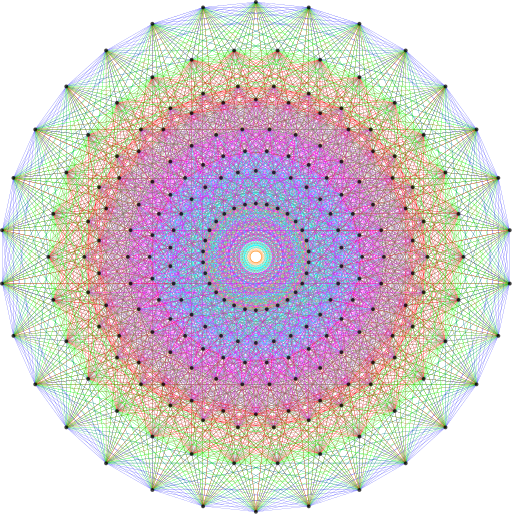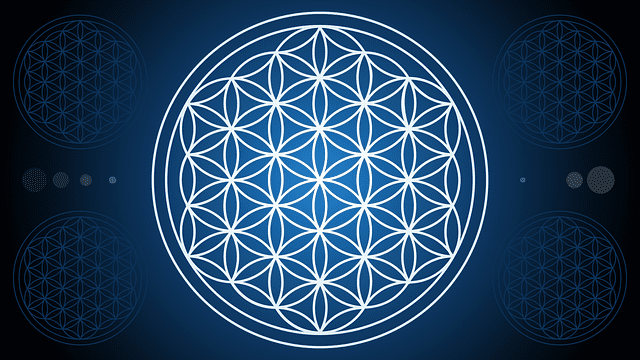We all have our little side projects. One of mine happens to be particle and astro physics. It’s weirdly soothing for me. Some people watch Queer Eye, I watch YouTube videos about hypercubes. Whatever floats your boat, right?
A Bit of History
Lots of chaos magicians and various magical types apply all kinds of psudo-physics to their magical work. We like to talk about quantum entanglement, observer effects, speed of light travel, and theories of multidimensionality. I am not immune to this. I’m right there with you all. That stuff is cool and has lots of implications for what it is we’re actually doing.
I believe some of the classic magical texts like the Kybalion were inspired by physics as well as by magical practice. I’ve read the Kybalion a couple of times now, and while I understand where it was going, I think it’s a little like understanding atoms using the nuclear model rather than the quantum model. It’s useful, but isn’t our best understanding anymore.
My comparison of the Kybalion and the nuclear model of an atom is not a coincidence. The Kybalion was published in 1908 and the latter was postulated in 1911. They are, in many ways, concurrent theories of understanding the world. I believe as modern mystics we should be keeping up with the times.
Magic and science are both ways to understand and experience the world. I am interested in both models. Because of this, sometimes I note ways in which they interact. In particular, I have been attempting to follow up by studying actual physics. This can sometimes be a challenge and I’ve been having to review my geometry, trigonometry and calculus. In the Resources section at the bottom of this article I’ve listed a number of books and videos that I have vetted to the best of my ability for accuracy to modern physics as well as readability.
Modern Mandalas
In particular I’d like to talk about the visual mandala that is E8. Most of you probably have heard of string theory as a way to understand subatomic particle physics, but it’s not the only model being looked at. E8 is another way people are using to understand particle physics. It is rooted in the geometry of stacking spheres when it is taken into the 8th dimension, which is the “8” part of E8. The idea is that this highly complex 8th dimensional shape, which took a vast amount of computer power to calculate, has parallels with some of the basic particles of the universe. This gets into “up” quarks, “down” quarks and planck lengths, which are believed to be the most minuscule limits of size in the universe. Basically we are talking about the smallest of the small things.
And so we come to E8, which is a geometric shape that the human mind can’t comprehend in its totality. Think of it like this. The first dimension is a line, like a radius of a circle. The second dimension is the circle. That line which was the radius pivots on one end to create it. The third dimension is what happens when that circle pivots on the diameter and creates a sphere in space. The fourth dimension is… a n-sphere. When we try to conceptualize it, we have to back down to second or third dimension, because we don’t exist in 4D. We can only see the projection of 4D back down in 3D or 2D, like a shadow is a two dimensional projection of a three dimensional object.
Turns out an eighth dimensional sphere pattern projected down onto a two dimensional space looks a lot like mandalas from all over the world:

Compare that with a classic of sacred geometry, the flower of life:

But Wait There’s More
There are many Buddhist mandalas I have used for meditation before, including sand paintings and chakra images. At this point, I prefer using mathematical models for meditation. Not only do they seem to induce trance more effectively for me, I’m also not appropriating imagery from a religion I am not actively practicing.
The other thing that modern math has on ancient praxis is animation.
Behold the animation of a two dimensional projection of an eighth dimensional circular lattice! When you watched it (Because you totally watched it and came back for more neat stuff, right?) did you see how it goes through recognizable symmetries based on 4, 6, and 8? I find it particularly interesting to focus on the way the edge of the image changes, allowing me to imagine it projecting up into the third dimension. Using breathing techniques in combination with watching the slow unfolding and shifting of the image I can bring myself back to my center quickly and move into magical headspace when I need it.
Physics departments will continue arguing about whether fermion and boson particles are actually represented by E8, string theorists will continue to hack onward toward a theory of unification, and mystics will continue to use modern technology to push their own experiences forward. Whether or not E8 really will use multidimensional geometry to explain the relationship of the basic particles to one another remains to be seen. However, it seems that humanity is inherently drawn toward radial symmetries (symmetries that have a radius, or are contained in a circle) such as mandalas and E8.
I’ve found meditating on higher dimensional forms to be useful for magic and meditation. I’d love to get a hold of a few of the major permutations of E8 and see what came welling up when I meditated on the unmoving images. What I’ve found has been very useful for fate work and portal work as well as for ideas as how to shift my own energy to be more effective. I find it amusing, even though I am a priest of ancient gods I relate to magic in a very modern way. My magic work predates my priesthood, and is informed by my knowledge of electricity, wave theory, and more. As humans we all grow and change. I want my magic to be informed by new knowledge as well as ancient praxis.
As I continue to search for new and old modalities of religiosity and magic I would love your support. If you find my research and explanations valuable please consider signing up as a Patreon.












